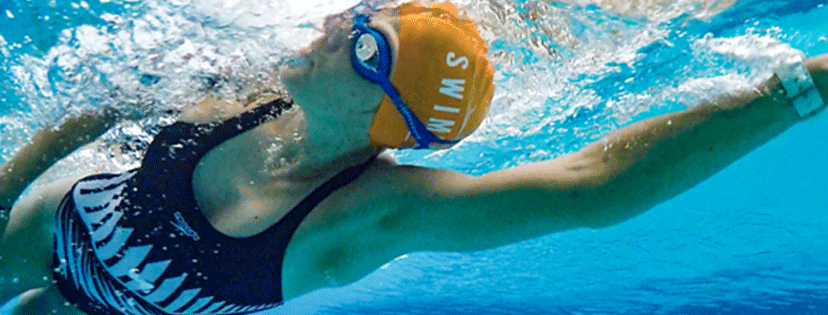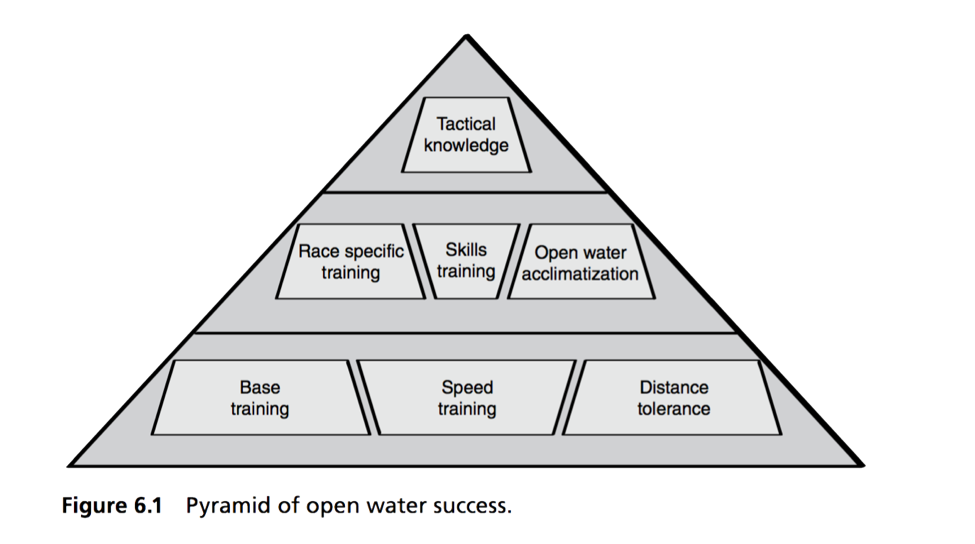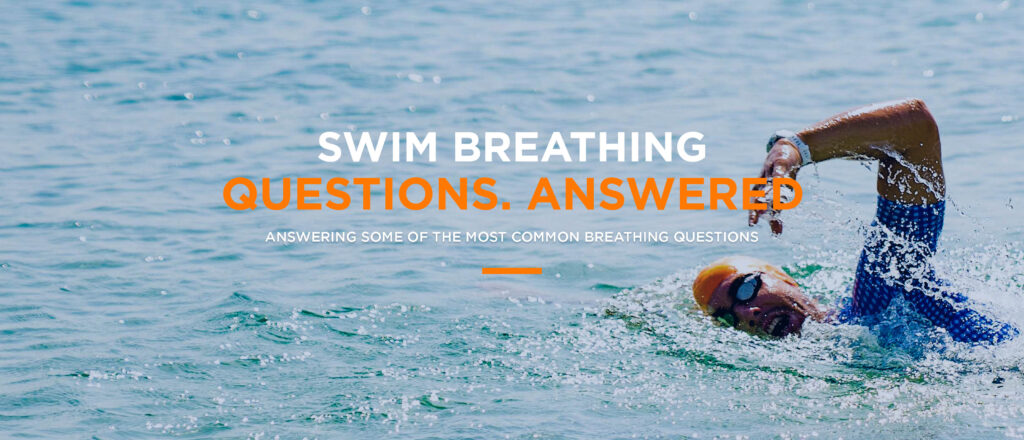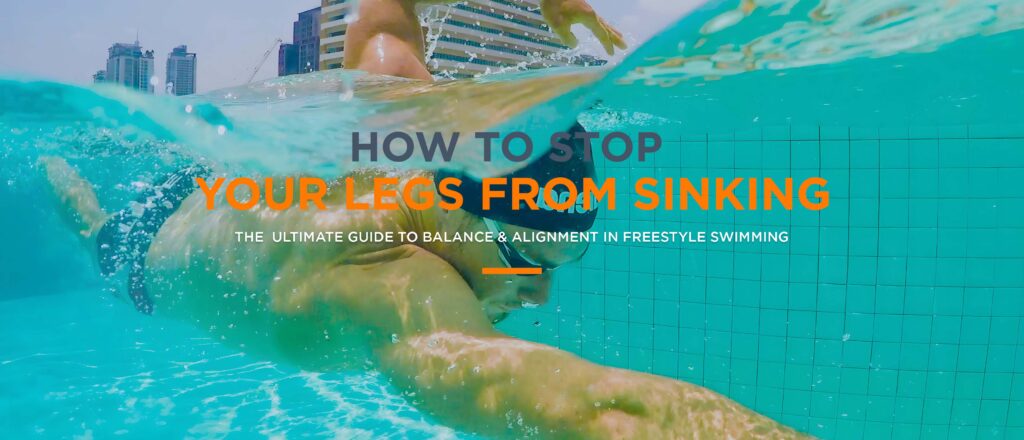How To Put An End To Your Extreme Urge To Breathe
Hey Team, it’s Rory here. Any new swimmer will tell you that freestyle breathing is THE biggest obstacle to learning to swim. In pretty much every other sport oxygen is always on demand, but in the water that’s not the case.
Working with a limited supply of air is a sensation that every swimmer gets used to.
If you’re gasping for air on every stroke, don’t stress this quick guide will help you feel more comfortable the next time you hit the water. Here are some simple tips for freestyle breathing.
Listen To The Audio Version:
Dealing With That “Need To Breathe” Feeling
Did you know that your need to breathe isn’t triggered by your body sensing a lack of oxygen? That feeling of desperation for air is triggered by your body’s reaction to a build up of carbon dioxide (CO2).
Most people don’t know this, but it’s key to freestyle breathing.
Exhaling the CO2 is critical.
The way you breathe out is just as important as how you breathe in when learning to control your breathing in the water.
Most inexperienced swimmers don’t even think about how to exhale. They’re only focused on breathing in!
Good swimmers know when to start exhaling, how hard to blow air out, how much air to exhale and can adapt it to the type of swimming they are doing.
Great swimmers make this exhalation such an unconscious habit, many them aren’t even aware of what they are doing.
Action Step
Next time you jump into the water, start by paying attention to the way you exhale and see if you notice any patterns or freestyle breathing habits. Send me an email and tell me what you notice

How Long Should You Breathe Out For?
Let me introduce you to something called your “breath ratio”.
It simply refers to the amount of time you spend exhaling compared to the amount of time spent inhaling.
On land, you tend to spend equal amounts of time breathing in and breathing out, so your ratio is 1:1 (One In: One Out)
If you transfer this 1:1 ratio to your freestyle breathing your stroke would be all kinds of messed up.
The outward breath would be so short you wouldn’t have enough time to complete a full stroke while your head is down. You’d turn your head for the breath at the wrong time in your arm cycle, get completely out of sync and everything would fall apart quickly.
Your ability to prolong the outward breath while your face is in the water is a key to efficient swimming.
Prolonging your outward breath gives you more time to streamline and balance you body with your head down.
With a long, controlled exhale you also trick your brain a little.
Remember it’s the levels of CO2 in your body that trigger your need to breathe. When you begin exhaling you are removing CO2 from your system. As the CO2 levels decrease so too does that voice in your head that’s screaming “BREATHE IN, BREATHE IN NOW.
It’s the voice that causes you to lose your composure and control of your breathing. Exhaling shuts that voice up for a little longer.
Action Step
Bob up and down in the water. Work on breathing out for twice as long as it takes you to breathe in (1:2). With practice you will want to increase that ratio to 1:3 and 1:4 then even longer.

Should You Breathe Bilaterally?
Here’s a topic a lot of other swim coaches and I won’t agree on.
There is a massive focus on bilateral breathing in many triathletes that are new to swimming.
While being able to breath to both sides is a very valuable freestyle breathing skill, it isn’t foundational to learning to swim.
Open water swim coach, Steve Munatones talks about the pyramid of open water success in his book:

Breathing to both sides is part of the skills training that falls in the second tier of the pyramid. It’s key to being a great swimmer but it’s not foundational to learning to swim effectively.
The primary reason for this comes back to breathing.
Let’s imagine you take 90 strokes in a minute minute worth of continuous swimming and you breathe every 3 stroke. How many breaths do you get in a minute?
90/3 = 30
Now maintaining the same 90 strokes in a minute of continuous swimming. If you began breathing every 2nd stroke, how many breaths do you get in a minute?
90/2 = 45
The change from breathing every 3 strokes to breathing every 2 gives you a 50% increase in oxygen intake. That 50% it will make a massive difference to how long you can continue to swim and the type of pace you can sustain!
Remember, your body needs a constant supply of oxygen to feed your muscles as they contract. The longer you hold your breath the more ineffective the muscle contractions become.
Without air you will reach a point of failure and have to stop.
Action Step
During your next warm up, try breathing only to your right hand side on even lengths and your left hand side on odd lengths. During your cool down, try breathe 2-2-2 to your right then 3 strokes without a breath followed by 2-2-2 to your left. These breathing patterns will keep some balance in your stroke while still allowing you to breathe every 2 strokes.
💁🏽♂️ Can I Help You With Your Freestyle Breathing?
If you’re struggling with to get comfortable with your breathing, leave me a comment below with your specific issue. I’d be happy to help you out.
~ Rory

Download the PDF Guide
Download your copy of this post as a PDF, keep it handy and refer back to it whenever you need.






4 thoughts on “Tips For Freestyle Breathing”
Hi Rory,
It was good reading your article, especially since I have difficulty maintaining breathing during freestyle swimming.My problem is I tend to run out of breath. When doing sink down I can get to bottom of pool, I can stay there longer but I can’t expel/exhale any more air(it’s all expelled). I have trouble exhaling slowly in controlled manner, it just is quick and I find inhale slightly longer duration than exhale.I am not able to sort it out,cannot control exhale rate.I have gone through many articles and all emphasize slow and controlled continuous exhale, I am not able to achieve it. I am regularly doing bobs and sink down exercises.
Please advise if any specific thing I can follow to control and prolong my exhaling.
Thank you
Hey! Thanks for your comments and question. Without knowing too much detail on your background, your fitness, current pace etc it’s a little difficult to pinpoint exactly what you will need to work on to fix up the problems. But here is where I would start
1. | Make sure you are swimming slow enough, if you are anaerobic it’s mission impossible to sort your breathing out.
2. | Switch to breathing every 2 and see what happens.
3. | When breathing every 2, hold your breath for one second when your face re-enters the water then powerfully exhale right before you turn your head to the side for the next breath
4. | If you are breathing every 2, remember you only need to exhale enough air to make space for the next breath… which only needs to be enough air to get you through 2 strokes (2-3 seconds). What that really means is that you don’t need to be emptying your lungs and trying to refill them completely with every breath. Your breathing rate should match your intensity, and if you followed point 1.| your intensity should be low until you have the hang of your breathing 😉
Thanks for quick response. Very much appreciated. I will try the suggested way:). I am just recreational swimmer and no intention to compete in triathlon. I just want to to swim well and enjoy it. Which at the moment I am not able to. I hope to improve though
Hi Rory,
I breathe every 3 strokes. Started when I was a kid and my Father was a very good swimmer. He was watching me and he said he thought I looked strong “but can you breathe every three times?” so I did and it stuck. I don’t know if he said that because he thought it was better or if he was playing me! But it stuck.
In reply to your request to comment on our exhaling patterns, I notice I breathe out through mainly through the nose but also a slight trickle of mouth also, as if pressing the last air out. I notice it as a habit. I’m not sure why I do that and nobody gave me coaching to do that.
Your stats above make perfect sense and now I’m concerned I’m not going to get enough oxygen transfer once I start swimming longer races. For now, at the swimming squad I can hold my own but I am not one of the fastest!
Any information you can share is greatly appreciated,
Thankyou
Best,
Cat